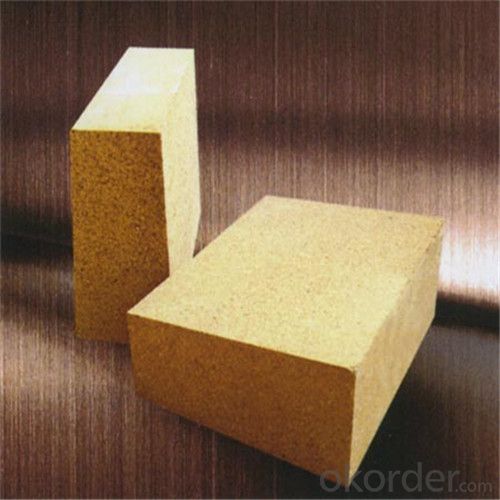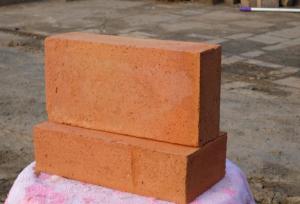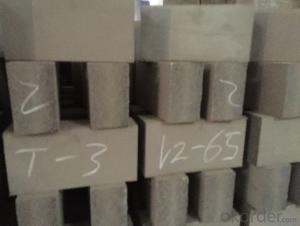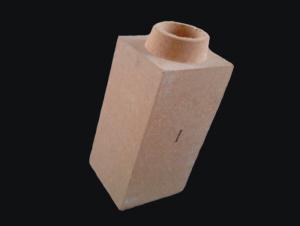Fireclay Brick for Hot Blast Furnace 1250-1450 ℃
- Loading Port:
- Shanghai
- Payment Terms:
- TT OR LC
- Min Order Qty:
- 100 pc
- Supply Capability:
- 2000000 pc/month
OKorder Service Pledge
OKorder Financial Service
You Might Also Like
What is the feature of Fireclay Brick?
l Fireclay Bricks or fire bricks are the most widely used refractory bricks because of its great features: low thermal conductivity, good thermal insulation performance; High resistance to Thermal shock, abrasion, chemical attack to provide long service life; easy operation and installation; broad usage or applications and low price etc.
l High density with low porosity fire clay bricks is our featured product in this category. Due to its low apparent porosity rate, high density with low porosity bricks have great features of strong resistance to erosion, high refractoriness under load, great Cold Crushing strength and high mechanical strength etc.
Technical Data of Fireclay Brick

Image of Fireclay Brick

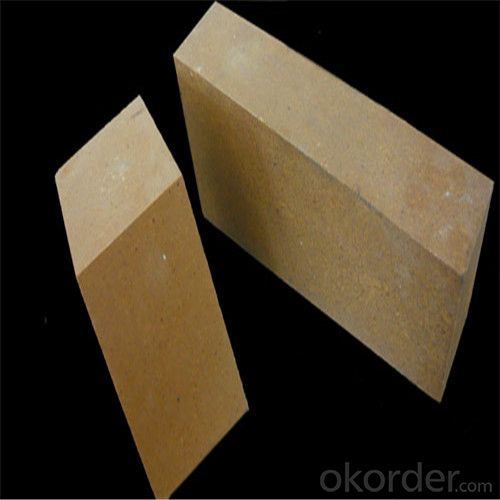

FAQ
Q1: How do you control the products quality?
A1: With strict quality control system throughout the materials selection and production process, our refractory and ceramic fiber products quality is effectively controlled to meet customer requirements.
From the raw materials selecting, our quality control begin. The quality certificates of raw materials are required and each batch will be tested before using. During production, the quality control is conducted by workers and then each piece will be sorted and examined by quality supervisor.
Q2: What`s the lead time for my order?
A2: It depends on customers’ requirements and our production schedule. And usually we need 30-60 days
for refractory bricks, 10-25 days for unshaped refractory materials and 10-20 days for ceramic fiber blankets.
Q3: Can you offer Door-to-Door delivery?
A3: Yes, but only for some countries such as U.S., UAE, Saudi Arabia, Iran, and Russia, etc.
Q4: What is the minimum quantity?
A4: There is no minimum order quantity. Depending on the item and processing, there may be a minimum production required, however we can offer a quotation based only on the quantity you need.
Q5: Can you give me a brief introduction of the application of your products?
A5: CNBM (China National Building Material) core refractory business comprises the production, sale and installation of high-grade refractory products, the development and implementation of customized system solutions as well as rendering outstanding services for the key industries in Glass, Iron& Steel, Petrochemical, Cement, Ceramic and Nonferrous Metals.
- Q: What kind of refractory brick is suitable for 1400 degrees shuttle kiln?
- Corundum mullite is also the principle about.2 can be. use high aluminum brick, which heat storage capacity is big, but the price is more expensive, and the chilling and heating performance is not good, the .
- Q: The advantages of using alkalinty refractory brick?
- Magnesia chrome and other spinel refractories alkalinity refractories; (2) the alkalescent chrome magnesite refractories, alkaline solvent resistance is strong, usually refers to the magnesia refractory material, dolomite brick and calcareous refractory materials, dolomite refractory materials and lime refractory materials, acid flux or acid refractory chemical reaction. Mainly used in alkaline steel furnace and non-ferrous smelting furnace. Alkaline refractory material at high temperature for alkaline slag. Mainly as the following categories, but the acid slag, forsterite refractories and magnalium: (1)strongly alkaline magnesia brick, magnesia carbon brick and cement kiln
- Q: What are 85 bricks, 95 bricks and standard bricks? What are the specifications?
- Chinese in the spring and Autumn period has created a square and brick, Qin and Han Dynasties brick technology and production scale, quality and variety have significant development, known as "Qin Zhuanhan tile".
- Q: Which is better for tunnel kiln suspended ceiling, refractory brick or ceramic fiber module ?
- Refractory bricks is better.
- Q: several refractory brick of rotary kiln several is damaged, how many refractory bricks should be replaced?
- In general, if the brick inside the kiln break or loose core, the bricks of whole circle should be replaced, if only mend by replacing a damage part is also ok, but the service life is shorter.
- Q: What materials mix mortar to build walls (with bricks)? The more burned the harder
- Glassy water is recommed to be used.
- Q: How to prevent high alumina refractory brick from producing crack when reproduce high alumina refractory brick?
- 1-1, on the 1 in order to prevent the emergence of crack in the production of high alumina refractory brick. 2 is appropriate, the water absorption rate of the tube mill should be controlled below 6%, the excess air coefficient controlled between level 1 and 2. The water absorption rate of clinker of bauxite with high alumina controlled under 4%-5%, making the high aluminum refractory brick burning in a smoothly and steadily weak oxidation atmosphere, and should be adjusted by thermotechnic
- Q: Can mud and salt be used as refractory materials
- Clay can be used as a refractory material, but salt can certainly not be used.
- Q: How to make refractory bricks? ? ?
- Can knock, use angle grinder to slowly cut off the glaze layer outside the refractory brick, and then use hand to gently tap, to compare the complete China to do the work of the destruction of the situation
- Q: What is the raw material for the production of refractory bricks?
- Mainly Magnesium Oxide, use sodium silicate as a binder.
Send your message to us
Fireclay Brick for Hot Blast Furnace 1250-1450 ℃
- Loading Port:
- Shanghai
- Payment Terms:
- TT OR LC
- Min Order Qty:
- 100 pc
- Supply Capability:
- 2000000 pc/month
OKorder Service Pledge
OKorder Financial Service
Similar products
Hot products
Hot Searches
Related keywords








